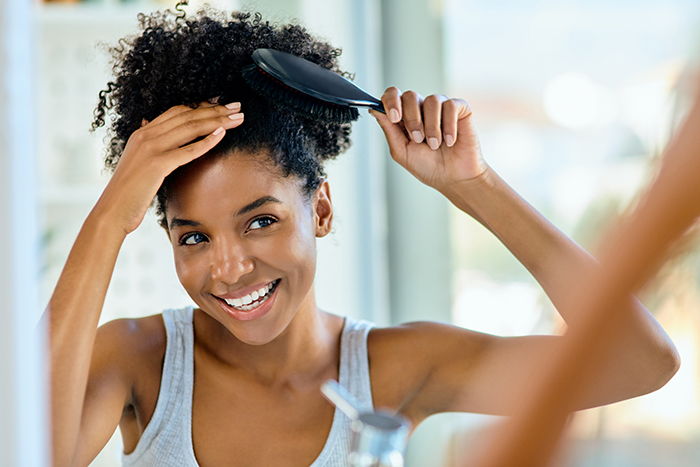Hair is often called a person’s “crown of beauty.” It frames the face, boosts confidence, and plays a big role in self-expression. But to keep hair stylish, it must first be healthy. Without proper care, hair can become dry, weak, and prone to breakage, making even the most beautiful hairstyles difficult to maintain.
This article explores essential hair care tips that promote both health and style, so that your hair not only looks good but also feels strong and vibrant.
1. Understand Your Hair Type
Every person’s hair is unique, and understanding your hair type is the first step to proper care. Hair can be straight, wavy, curly, or coily, and each type has different needs.
Straight hair tends to get oily quickly and needs lightweight shampoos.
Wavy hair benefits from moisturizing products to enhance its natural texture.
Curly and coily hair are often drier and need extra hydration and protective styling.
By knowing your hair type, you can choose the right products and routines that work best for you.
2. Keep the Scalp Healthy
Healthy hair starts with a healthy scalp. Regularly cleansing the scalp removes dirt, excess oil, and product buildup that can block hair follicles. Massaging the scalp while washing improves blood circulation, which stimulates hair growth.
Using natural oils like coconut oil, argan oil, or castor oil can also nourish the scalp and keep it hydrated. Avoid scratching or over-washing, as this can lead to dryness or dandruff.
3. Wash Hair Properly
Washing hair is important, but too much shampooing can strip natural oils and cause dryness. Most people only need to wash two to three times a week, depending on their hair type and lifestyle.
Tips for proper washing:
Use lukewarm water, not hot, to avoid weakening the strands.
Choose a sulfate-free shampoo for gentle cleansing.
Apply conditioner mainly to the mid-lengths and ends, where hair is driest.
Rinsing thoroughly ensures no residue is left behind, which can weigh hair down.
4. Moisturize and Condition Regularly
Moisture is the key to shiny, manageable hair. Conditioner should be a non-negotiable part of your routine. For very dry or damaged hair, deep conditioning treatments once a week can make a big difference.
Leave-in conditioners and hair masks provide extra hydration, protect against breakage, and keep hair soft. Natural ingredients like shea butter, aloe vera, and honey are excellent for restoring moisture.
5. Protect Hair from Heat and Chemicals
Heat styling tools—like flat irons, curling irons, and blow dryers—can make hair look glamorous but often cause long-term damage. To minimize harm:
Always apply a heat protectant spray before styling.
Use the lowest heat setting possible.
Limit heat styling to special occasions instead of daily use.
Chemical treatments like relaxers, bleaching, and coloring should also be approached with caution. If you choose to dye or relax your hair, seek professional help and maintain it with strengthening treatments.
6. Embrace Protective Styles
Protective hairstyles like braids, twists, buns, and wigs help reduce daily manipulation and shield hair from harsh weather. They allow hair to rest and grow without constant styling stress.
However, protective styles should not be too tight, as excessive tension can lead to traction alopecia (hair loss around the hairline). It is also important to care for the scalp even while wearing these styles.
7. Trim Regularly
Split ends are inevitable, but if left unattended, they travel up the strand and cause breakage. Regular trims every six to eight weeks help maintain healthy hair and give it a neat, polished look. Trimming does not make hair grow faster, but it prevents damage and keeps hair looking fresh.
8. Eat a Hair-Friendly Diet
What you eat affects the strength and shine of your hair. A balanced diet rich in vitamins, proteins, and minerals supports growth and prevents shedding.
Nutrients that promote healthy hair include:
Protein (found in eggs, fish, beans, and lean meat) for building hair strands.
Iron (from spinach, lentils, and red meat) to prevent hair loss.
Vitamin A and C (from carrots, oranges, and berries) to boost scalp health.
Omega-3 fatty acids (from fish, nuts, and seeds) for shiny, nourished hair.
Drinking plenty of water also ensures that hair stays hydrated from the inside out.
9. Protect Hair from Environmental Damage
Sun, wind, and pollution can weaken hair and strip it of moisture. Wearing hats, scarves, or using UV-protectant sprays can shield hair from damage. For swimmers, rinsing hair before and after swimming helps reduce chlorine absorption.
10. Build a Consistent Routine
Healthy hair is not achieved overnight—it requires consistency. Building a simple routine with washing, conditioning, moisturizing, and protecting will gradually improve your hair’s health and appearance. Avoid frequently switching products, as hair responds best to a stable routine.
Conclusion
Hair care is a balance of cleanliness, moisture, protection, and nourishment. By understanding your hair type, using the right products, and avoiding damaging practices, you can maintain hair that is both healthy and stylish.
Ultimately, beautiful hair is not just about following trends but about treating your strands with love and patience. With proper care, your hair becomes more than just a fashion statement—it becomes a symbol of confidence, identity, and self-expression.


Comments (0)